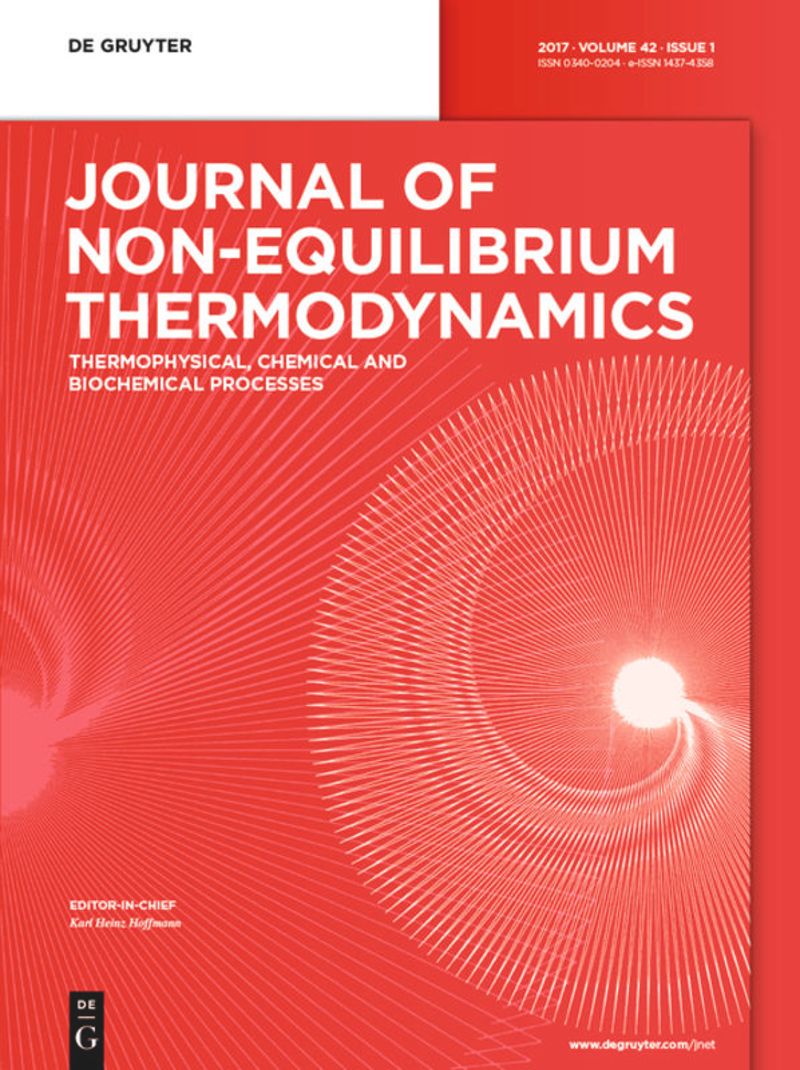Stochastic dissipative Euler’s equations for a free body
IF 4.2
3区 工程技术
Q1 MECHANICS
引用次数: 0
Abstract
Intrinsic thermal fluctuations within a real solid challenge the rigid body assumption that is central to Euler’s equations for the motion of a free body. Recently, we have introduced a dissipative and stochastic version of Euler’s equations in a thermodynamically consistent way (European Journal of Mechanics – A/Solids 103, 105,184 (2024)). This framework describes the evolution of both orientation and shape of a free body, incorporating自由体的随机耗散欧拉方程
真实固体内部的内在热波动挑战了自由体运动欧拉方程的核心--刚体假设。最近,我们以热力学一致的方式引入了欧拉方程的耗散和随机版本(《欧洲力学杂志》--A/固体 103, 105,184 (2024))。这一框架描述了自由体方向和形状的演变,其中包含内部热波动及其伴随的耗散机制。在本研究中,我们证明了在没有角动量的情况下,该理论预测物体的主轴单位矢量在单位球面上经历各向异性的布朗运动,而各向异性是由物体的不同惯性矩引起的。由此产生的主特征向量的平衡时间相关函数呈指数衰减。小体的分子动力学模拟证实了这一理论预测。通过理论与平衡 MD 模拟的比较,我们可以测量取向扩散张量。然后,我们利用随机耗散欧拉方程中的这一信息,描述了围绕不稳定中间轴旋转的物体的非平衡状态。理论与模拟之间的一致性非常好,为理论框架提供了验证。
本文章由计算机程序翻译,如有差异,请以英文原文为准。
求助全文
约1分钟内获得全文
求助全文
来源期刊
CiteScore
9.10
自引率
18.20%
发文量
31
审稿时长
1 months
期刊介绍:
The Journal of Non-Equilibrium Thermodynamics serves as an international publication organ for new ideas, insights and results on non-equilibrium phenomena in science, engineering and related natural systems. The central aim of the journal is to provide a bridge between science and engineering and to promote scientific exchange on a) newly observed non-equilibrium phenomena, b) analytic or numeric modeling for their interpretation, c) vanguard methods to describe non-equilibrium phenomena.
Contributions should – among others – present novel approaches to analyzing, modeling and optimizing processes of engineering relevance such as transport processes of mass, momentum and energy, separation of fluid phases, reproduction of living cells, or energy conversion. The journal is particularly interested in contributions which add to the basic understanding of non-equilibrium phenomena in science and engineering, with systems of interest ranging from the macro- to the nano-level.
The Journal of Non-Equilibrium Thermodynamics has recently expanded its scope to place new emphasis on theoretical and experimental investigations of non-equilibrium phenomena in thermophysical, chemical, biochemical and abstract model systems of engineering relevance. We are therefore pleased to invite submissions which present newly observed non-equilibrium phenomena, analytic or fuzzy models for their interpretation, or new methods for their description.

 求助内容:
求助内容: 应助结果提醒方式:
应助结果提醒方式:


